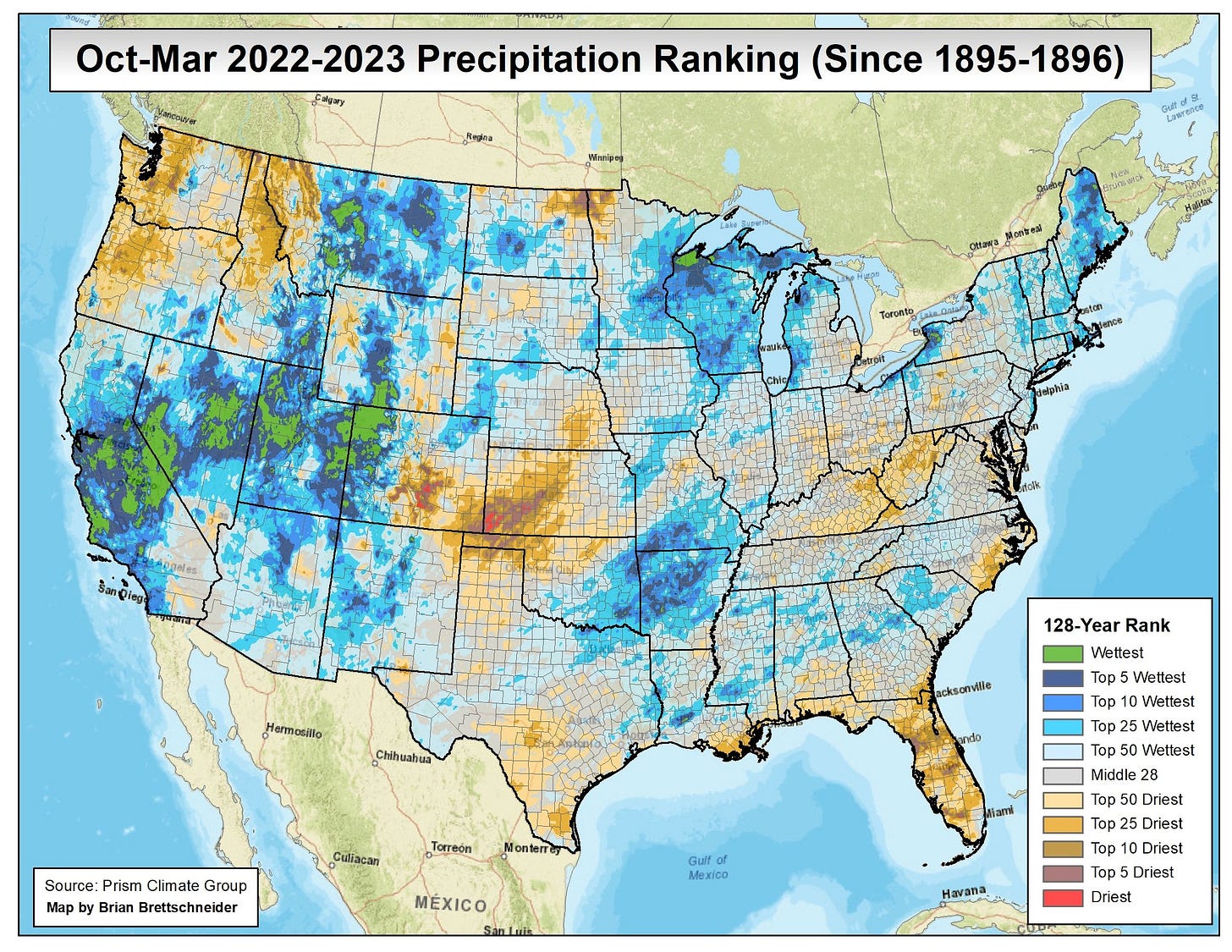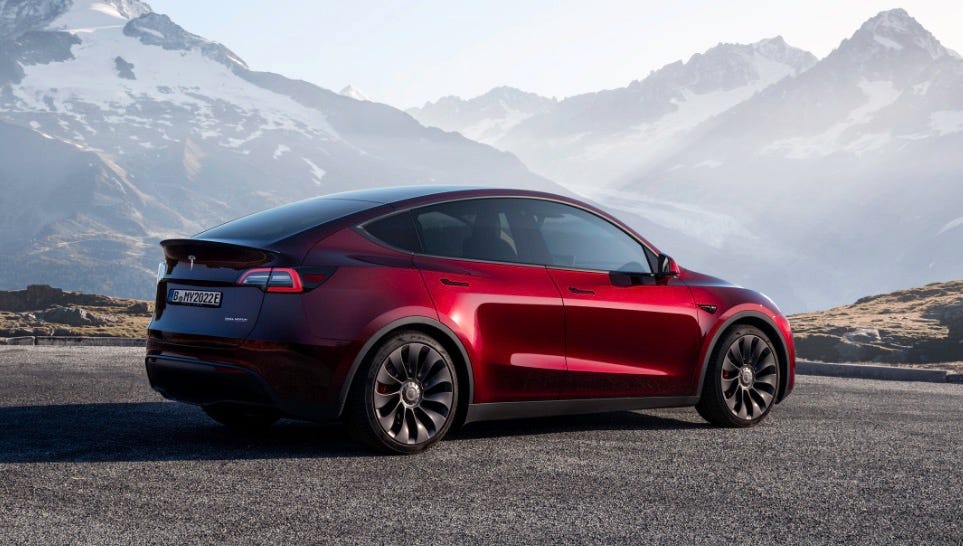Why spring banking meetings next week could be biggest climate event of the year
Welcome to Callaway Climate Insights. Happy Passover and Easter Week to all those who celebrate.
Today’s edition is free. To read our insights and support our great climate finance journalism four days a week, subscribe now for full access.

Bankers from around the world, fresh from a bruising March that saw the collapse of Silicon Valley Bank and the demise of Credit Suisse, will convene in Washington D.C. next week for their annual spring meetings, in what could be the biggest climate event of the year.
Forget COP28, which is promising to be an oil fest in Dubai in November. The spring meetings, hosted by the World Bank and the International Monetary Fund, are where strategies for the next several years of global climate investment and mitigation will be written.
Center of focus will be U.S. Treasury Secretary Janet Yellen’s efforts to dramatically change how both institutions work across the world, how they raise money, and how they can expand their efforts to help poorer countries withstand global warming. The meetings will also be a coming out party of sorts for Ajay Banga, the former Mastercard CEO who is the sole candidate to become the new president of the World Bank later this year.
Yellen’s push comes after her reputation has been somewhat tarnished recently by the banking crisis and how the government handled it. Whether she can overcome this to convince the private sector to pony up billions to help expand the IMF and World Bank efforts will be the drama of the week. Banga, who has been on a global listening tour as he works to secure his candidacy, is expected to be a prominent supporter of this public-private strategy, which should give them both a good start. On Wednesday, he said he supported a plan to expand the World Bank’s lending by about $5 billion a year, which would be more than a 50% jump.
Also attracting attention will be the Bridgetown Initiative, the plan put forward last year by Barbados Prime Minister Mia Mottley, which calls for the restructuring of sovereign debt markets to give small countries relief from paying interest during times of climate calamity and disaster.
These meetings are often talkfests and late-night parties, but a look at the calendar this year shows climate mitigation taking center stage in a way it hasn’t in the past. If these massive institutions can be restructured and redirected toward a much more meaningful investment in fighting global warming, the seeds of those changes will be planted amid the cherry blossoms in Washington next week.
Don’t forget to contact me directly if you have suggestions or ideas at dcallaway@callawayclimateinsights.com.
Follow us . . . .
Twitter | LinkedIn | Facebook | Instagram
Zeus: Jane Goodall on AI and talking to animals, and life after death
. . . . Legendary environmentalist and ethologist Dr. Jane Goodall has made her life’s work out of observing and communicating with animals, but she tells David Callaway she’s not a fan of using AI to try to turn their languages into human form. In an exclusive interview with Callaway Climate Insights the week before her 89th birthday, Goodall gave her views on technology, investing in natural restoration, and why she believes in life after death. . . .
Thursday’s subscriber-only insights

. . . . Can you read Chinese? We’re glad some people can because a Chinese website is reporting that Tesla TSLA 0.00%↑ — where it has one of its Gigafactories — is planning about a million units of annual capacity for a lower-priced model, probably selling for about $25,000. This was, as we reported, what was expected at Elon Musk’s presentation to investors last month. Read more. . . .
. . . . Chinese officials are weighing a ban on exports of technology to process and refine rare-earth elements, including limiting exports of alloy tech for making high-performance magnets — a vital part of EV motors. Japan’s Nikkei Asia reports the new export actions are in response to Washington’s chip restrictions and a move that would counter the U.S. tech advantage. . . .

. . . . With the introduction of its F-150 Lightning pickup truck and the success of its Mustang Mach-E, Ford seemed to have GM beat on the EV front. But now, in part due to manufacturing problems at Ford, GM has pulled ahead in sales. Plus, Stellantis just pulled up in a new Ram EV pickup with a 500-mile range. How is the race shaping up? Read more here. . . .
Editor’s picks: Clean energy — made in Asia, and bubbling up from UK coal mines
Where the clean energy tech is
China dominates the industry when it comes to looking at where clean energy technologies and their components are made, says Visual Capitalist. Some 75% of the global manufacturing capacity for seven clean energy technologies is in China and the Asia-Pacific region. In its report titled Where are Clean Energy Technologies Manufactured? (see the visualization above), VC breaks down global manufacturing capacity by region for mass-manufactured clean energy technologies, including onshore and offshore wind, solar photovoltaic (PV) systems, electric vehicles (EVs), fuel cell trucks, heat pumps, and electrolyzers, based on the IEA’s 2023 Energy Technology Perspectives report.
Clean energy bubbles up from old coal mines
Old, unused coal mines may have a life after death of sorts. In northeast England, the remnants of old, flooded mine workings — which will never again produce coal — are now producing a much cleaner energy: geothermal heat. A BBC News report says a new district heating system in Gateshead is “poised to begin warming homes and buildings in the area at a cost 5% below market rate, using the clean heat from its mines [490 feet] below the ground.” The UK Coal Authority estimates 25% of houses in the UK sit on coal fields, meaning many are in close proximity to the warm water of flooded mines. According to the report, researchers suggest that this makes mine water one of the UK’s largest underused clean energy sources.
Explain that: Anthropocene

. . . . The “Anthropocene” is a proposed new geological epoch resulting from significant human-driven changes to the structure and functioning of the Earth System, including the climate system, according to the IPCC’s climate change glossary. Originally proposed in the Earth System science community in 2000, the proposed new epoch is undergoing a formalization process within the geological community based on the stratigraphic evidence that human activities have changed the Earth System to the extent of forming geological deposits with a signature that is distinct from those of the Holocene, and which will remain in the geological record. Both the stratigraphic and Earth System approaches to defining the Anthropocene consider the mid-20th Century to be the most appropriate starting date, although others have been proposed and continue to be discussed. The Anthropocene concept has been taken up by a diversity of disciplines and the public to denote the substantive influence humans have had on the state, dynamics and future of the Earth System. . . .
Words to live by . . . .
“There is no more powerful voice than that of a mother, father, caretaker, nurturer. We, as stewards of this planet, need to engage even more deeply to confront climate change and environmental injustice. We are the adults, the leaders — and must show our children that we are fighting in earnest for their future, and for the collective future of humankind.” — Lauren Sullivan, founder of Reverb.





